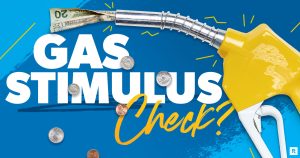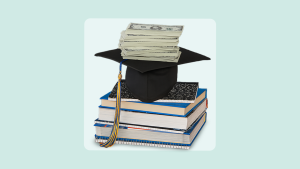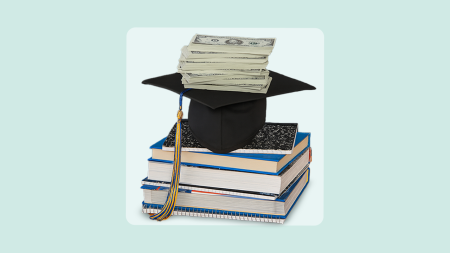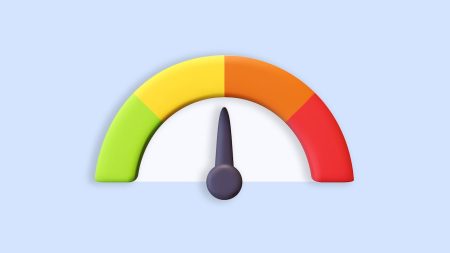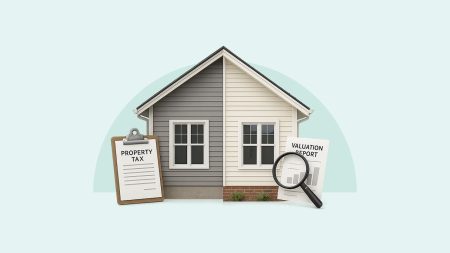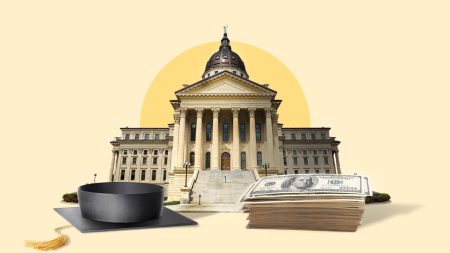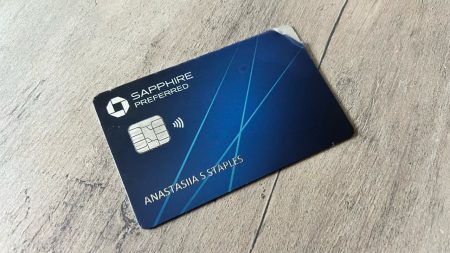Image by Getty Images; Illustration by Bankrate
Key takeaways
- Knowing your student loan balance is the first step in making a plan to pay it off.
- Where you check your loan balance can differ depending on the type of student loans you have.
- For private loans, check with your lender or servicer to find the loan balance.
- For federal student loans, check the Federal Student Aid (FSA) website or check with your loan servicer directly.
Unsure of your total student loan balance? Knowing your total student loan amount can help you make a plan to pay back your student loans efficiently, but the method for checking your balance may differ depending on the type of loans you have. Check with your school or use the Federal Student Aid (FSA) website to find your federal student loan balance. For private student loans, talk to your lender.

Big changes with the One Big Beautiful Bill Act (OBBBA)
Big changes are set to come for federal student loan programs. Bankrate senior loans writer Lauren Nowacki breaks it down and explains what it means for you.
Learn more
Terms to know
- Loan types
-
There are two types of student loans: federal and private. Federal student loans are administered by the FSA and serviced by a federal student loan servicer. Private student loans are administered by a private lender. These loans typically have higher interest rates and fees than federal student loans.
- Loan servicer
-
The organization or lender that manages your student loans by sending you loan statements, taking loan payments and managing any other administrative tasks related to your loans
- Loan balance
-
The amount of money you have left to pay off your total loan amount
- Loan status
-
The current state of your loans (ex. “in repayment” means you should currently be making payments, “in-school” means you are currently enrolled in college and “forbearance” means your loan payments are temporarily paused or reduced due to difficult circumstances)
- Repayment due dates
-
The specific date your loan payment is due each month, usually listed in your loan repayment schedule
Checking your student loan balance
When you check your student balance, make sure to use legitimate sources so you can be certain the information is accurate. The best method depends on the type of student loans you have.
1. Online
For federal student loans, logging into your account on the FSA website is your best option for finding your federal student loan balance. You’ll need your FSA ID to log in, and if you don’t already have one, you can make one on the FSA website. Here, you’ll find all you need to know about your federal loans, including the name of your loan servicer, your loan balance, payment due dates and all the outstanding federal loans you have.
If you need more details about your loans – like payment due dates and payoff options – connect with your loan servicer. Every loan servicer has a slightly different process for getting these details, but they’ll likely have an online portal. Head to your servicer’s website to make an account. Contact their customer service team if you have trouble.
For private student loans, you’ll need to connect with your lender or loan servicer. The easiest way to do that is to log in to your lender’s website or app, where you should be able to see all the details of your loan.
2. Your school’s financial aid office
If you are still a student, finding your student loan balance may be a lot easier if you just contact the school’s financial aid office. This can be an easy stop between classes, even if you’re not still enrolled at your college.
The financial aid office at your college or university directly receives payments from your loan servicer for federal student loans. Talking to them can help you confirm that payments are being received and applied correctly to your loans. They can also tell you the name of your loan servicer and how to start making payments.
Your college’s financial aid administrator may also be able to tell you about any private student loans you borrowed since most private student loans are school certified, though it’s possible they may not have as much information.
3. Your credit report
You can also find loan details on your credit report, which keeps track of all outstanding debts you owe, including student loans. You can get your credit report from any of the three major credit bureaus, but you can also get a free credit report once a year from AnnualCreditReport.com. Many banks also offer credit report services if you have an account with them.
Each report will list your student loan lender or service, as well as the loan amount owed. It will also show if you’ve made on-time payments or not. Credit bureaus keep track of this information to calculate your credit score.
Keep in mind:
Loan balances may not be fully updated on your credit report, so always check with the lender for an accurate balance.
Ways to pay down your student loan balance
Knowing your student loan balance can help you make a plan to pay off your student loans. These methods can help you pay down your student loan balance:
- Set up autopay: If you set up automatic payments on your student loan account, you won’t miss a payment, and you might get a discount on your interest rate, saving you money over the long run.
- Participate in AmeriCorps or military service: Those who complete a year of AmeriCorps service are eligible for the Segal Education Award to help pay off federal student loans. Members of the U.S. Armed Forces may also be eligible for lower interest rates on student loans and loan forgiveness programs.
- Make biweekly payments: While not everyone can afford to pay more than their minimum student loan payments, making biweekly payments instead of monthly can help you chip away your balance faster. Making 26 half-payments on your loans throughout the year means you end up making one extra full payment.
- Use an income-driven repayment plan: Under the OBBA, practically all existing IDR programs will be eliminated and replaced with a new standard plan and a new income-driven repayment plan called the Repayment Assistance Plan (RAP). If you are currently enrolled in an IDR program, you will need to switch out by July 1, 2028. The income-based repayment plan (IBR) will continue to exist until RAP officially rolls out, so you may switch into IBR until then. If you are under the paused SAVE plan, interest will start to accrue again in August.
- Consider refinancing: Refinancing student loans with a private lender can open up lower interest rates or lower monthly payments. While it’s not always wise to refinance federal student loans, it’s a good option for easing the repayment of private student loans if you can get a better student loan refinance rate.
- Make a budget: Putting a budget in place can help you figure out how much you can actually afford to set aside each month for student loans. It may take some sacrifice in other financial areas, but figure out if it’s possible to put extra towards your loans each month. You can even get some budgeting help from ChatGPT.
- Take advantage of employer student loan programs: Many employers offer programs to help with student loan repayment as a part of their benefits package. Look for jobs at companies that may offer this benefit or talk to your HR department to find out if they have programs like this.
- Increase your income: If you’ve budgeted and you still don’t have enough money to pay towards your student loans, consider asking for a raise or looking for jobs that pay more. Starting a side hustle can also put extra cash in your pocket. This can give you extra room in your monthly budget to pay more toward student loans.
- Look into student loan forgiveness programs: Currently, there are multiple student loan forgiveness programs available. Explore options like Public Student Loan Forgiveness (PSLF) or Closed School Discharge to see if you qualify.
- Start making payments in school: Most student loans don’t require payments while you are enrolled in classes. Typically, interest doesn’t accrue during this time if you have a subsidized federal loan, but that doesn’t mean you can’t make payments. Making payments as a student can help you get a head start on paying them off without accruing interest. Even a little bit each month can make a big difference down the road.
Why did my student loan balance go to zero?
A student loan balance of zero doesn’t always mean your loans are gone. Here’s what it could mean:
- You got a new loan servicer: It’s common for student loans to transfer to new servicers, so your account may be zero with your old servicer if your loan amount is now held with another servicer. You should receive communication from your servicer in advance of such a transition.
- You qualify for PSLF: Student loan borrowers relying on PSLF have experienced a lot of trouble when applying for loan forgiveness, and the U.S. Department of Education has been trying to fix that. If you previously applied for forgiveness and were rejected, your application may have gotten a second look and been approved. You should receive an approval letter if this is the case.
- You’ve completed some other student loan forgiveness program: PSLF isn’t the only federal student loan forgiveness program, so it may be possible you were under another program. If you have applied for one of these existing programs, your loan balance could be at zero.
- Your student loan was forgiven or canceled: In January 2022, student loan servicer Navient agreed to forgive $1.7 billion in student loan debt. Your loan could have been part of this forgiven debt or a similar lawsuit. Contact your servicer if you have a zero account balance and think this may have happened to you.
Bottom line
It can take a lot of time and money to pay off your student loans. The first step to making a plan for paying them off is knowing your student loan balance. Understanding where to find your balance amount can help you keep track of who you need to pay and when.
Check with your financial aid office to get started. It can point you in the right direction, whether you have private or federal student loans.
Why we ask for feedback
Your feedback helps us improve our content and services. It takes less than a minute to
complete.
Your responses are anonymous and will only be used for improving our website.
Help us improve our content
Read the full article here
